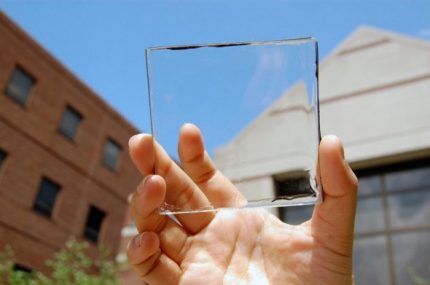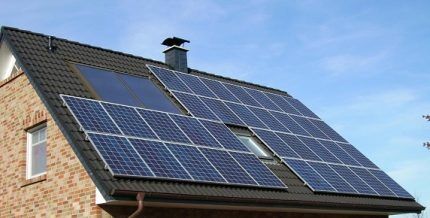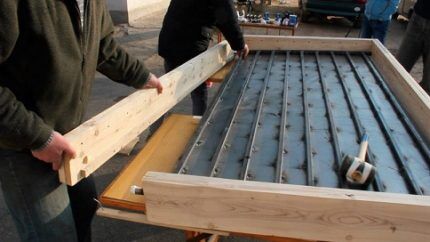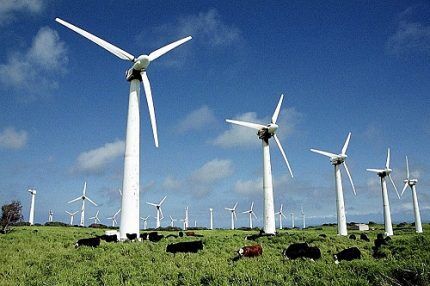Alternative energy for the home: review of non-standard energy sources
“Green energy” attracts people simply with its cosmic prospects.Inexhaustible energy can be obtained from the environment completely free of charge to service autonomous communications. Moreover, its resource is restored daily without human intervention.
However, in order to competently use the real gifts of nature, you need to know how they work and where they are used. Do you agree?
You will learn everything about how alternative energy is used for the home from our article. After reviewing the information we provide, you can choose the most suitable option for generating heat or electricity.
We have described in detail installations that process solar/wind/water/earth energy. We briefly and extremely simply outlined the principle of their operation. The information provided will help compare methods and sources of energy production.
The content of the article:
Types of alternative energy sources
Purchasing industrial models of modern devices for extracting thermal or electrical energy from the environment is not so difficult.
The most popular options for such equipment include:
- solar panels;
- solar collectors;
- wind generators;
- heat pumps;
- biogas generators.
Science does not stand still; new models of devices for producing alternative energy are appearing. It is important not only to choose the appropriate option, but also to install it correctly. Very often it is not possible to get by with just one unit.You can combine the use of different resources.
For example, a solar battery provides more electricity in the summer, and a wind generator provides more electricity in the winter. The combination of these two devices allows you to provide a sufficient amount of autonomous electricity throughout the year. Other devices can also be combined in a similar way.
#1: Using Solar Panels
These elements are becoming more popular and more diverse. They are sold both as ready-made kits and as individual photocells. Amateur craftsmen who prefer to do everything with their own hands willingly work with the latter - this is a relatively simple task.
To make a solar battery with individual parameters, you should purchase the required number of ready-made photocells and solder them into a common circuit.

There are monocrystalline and polycrystalline solar cells. The former are more productive and durable, but are effective only if they receive a stable flow of energy. Polycrystals have lower efficiency and a shorter service life, but they can work quite effectively even in cloudy conditions.
The photovoltaic cells are placed under a layer of durable transparent material so that they can absorb energy and still remain in position. The case with a transparent outer surface looks like a metal frame. It is used to secure the panels.
Sometimes a wooden structure is used instead of a metal body.This is a less durable, but quite acceptable option.

The design with solar panels turns out to be quite bulky, so most often it is placed directly on the roof of the house. The housing is mounted on a stand so that the panel with photocells can be rotated, this will allow you to monitor the movement of the sun and capture more UV rays depending on the time of year.
When heavy rainfall occurs, the panel is turned into a vertical position to prevent damage and reduce possible contamination. Installation of panels is only the first stage in the implementation of such a system.
For its full operation, you will need to connect the photocells via a charger to the solar inverter system.
To accumulate the resulting electrical system, you will need batteries for solar panels, For example, SUNLIGHT PzS. Such elements can be installed underground, at a fairly significant depth - up to three meters.
Correct selection inverter for solar panels and battery controller - an important point in ensuring maximum efficiency of the entire system. The better all the components are selected, the better the special calculations are performed, the less electrical energy losses will be.
An interesting type of solar panels - flexible film version, their working layer is applied to a polymer film. They are installed on the glass windows of high-rise buildings, of course, on the sunny side.
The efficiency of such elements is slightly lower than that of the traditional version - only 7%. But the convenience of their use and space saving compensate for this disadvantage.

The device called Betaray. This is a fairly large glass ball, which, like a lens, collects the sun's rays and directs them to a panel with photocells. The installation is capable of rotating automatically to get maximum sunlight.
As a result, you can get by with fewer photocells and make the flow of sunlight more stable. At night, Betaray is capable of absorbing moonlight and starlight. This is not much, but enough to provide full street lighting. Overall, this device has an impressive efficiency of 35% for solar panels.
Useful tips on choosing, installing and operating solar panels are presented here:
#2: Application of solar collectors
This is a more modern and productive variation of the summer shower. Even the most modest dacha has a barrel of water, which heats up during the day to quite a decent level.
If you install a system of narrow pipes on the roof through which water circulates, you can get a noticeable amount of heat, fully providing the house with hot water supply and even quite decent heating.

The operation of this alternative energy source is based on the ability of water and air to circulate when heated. The heat exchanger tank is installed at a higher level than the collector pipes. The heated water rises and enters the top of the heat exchanger coil.
Cooling down upon contact with tap water, the coolant of the solar collector falls down and again moves into the pipes, which are heated by the sun.
The natural circulation of heating and cooling water eliminates the need for special pumps or other electrical equipment.
You can make the simplest version of such a system from available materials: pipes of different diameters, metal sheet as a base. The stand to which the base is attached can be made from a corner or other metal elements.

Typically, the part of the system that is on the outside is painted black to increase its ability to absorb heat. The base with pipes is fixed in such a way that you can change the angle of its inclination.
All that remains is to install a heat exchanger tank, place a coil in it and connect the system elements to each other and to the water supply and/or heating system.
Detailed technology for manufacturing a solar collector for heating is described in this article.

Of course, modern industrial solar collectors are more complex and work more efficiently. Some devices use freon as a coolant, which allows you to obtain thermal energy even during cold weather.
Industrial units can be equipped with vacuum tubes, a block with photocells, temperature sensors, an automatic control system, etc. The cost of such a collector can be quite impressive.
#3: Exploiting Wind Energy
Wind generators are devices that have been known for a long time and are quite popular among fans of environmentally friendly energy. This is a rather cumbersome device, especially if the windmill blades rotate in a horizontal plane. Therefore, versions with vertical blades are more popular.

The windmill is placed on a high and durable stand. The movement of the blades is transmitted to the generator, and the resulting energy is stored in a battery. The electricity is then transferred to the home's internal electrical system or otherwise used.
A homemade windmill can cover the electricity needs of a small summer cottage:
Industrial models of modern wind generators usually equipped with a convenient electronic control panel.
Homemade devices are constructed according to fairly simple diagrams and drawings. On the Internet you can find many options of different types and types. You need to choose a convenient place to place such a structure, where a strong wind blows, and the unit will not disturb anyone. The higher the blades are mounted, the better.

Not long ago the company Uprise presented an original development - a wind turbine installed on a mobile platform.If desired, the device can be assembled into a compact size, and then transported using a regular SUV and installed in another location.
The power of the Uprise mobile wind turbine is 50 kW. According to experts in the field of alternative energy, this is quite enough to provide electricity to not the largest private house, and even to share excess electricity with neighbors.
An even more original option for converting wind energy into kilowatts is an aircraft Makani Power.

This is a highly scientific variation of a kite on which small wind turbines are mounted. The idea is to deliver the generator to the upper atmosphere, where the air flow speed is much higher than that of the ground. The energy flows down the cable, which also functions as the rope holding the “kite.”
Interesting overview of wind generator repair SF-600-5 (China) allows you to get an idea of possible problems with economy class appliances:
Interesting ideas for making a windmill yourself are described in the article - How to make a wind generator with your own hands: device, operating principle + best homemade products
#4: Heating based on heat pumps
These devices have long taken pride of place in the family of devices for producing environmentally friendly energy. A heat pump works in much the same way as a refrigerator or air conditioner, but in reverse.
Devices of this type are used mainly for heating the home, as well as for heating water.Although there are models that successfully cope with the duties of an air conditioner in the summer.

Such systems use air energy, soil and water heat as a heat source. Energy is everywhere, but in these resources it has low potential. The external circuit of the heat pump collects these scattered crumbs of thermal energy and moves them into the system.
To transform energy into a high-potential state, a refrigerant, usually freon, is used. It absorbs the received energy, heats up and enters the compressor. Here the refrigerant is compressed and passes through the evaporator into the heat exchanger of the internal heating circuit.
The coolant absorbs concentrated thermal energy, and freon passes through the evaporator and returns to a liquid state. Now it receives low-potential energy, heats up, etc.
Depending on the source of thermal energy, as well as on the type of coolant, the type of heat pump is selected: “earth-water”, “water-water”, “air-water”, “air-to-air” and so on. Using such a device, you can implement not only traditional water heating, but also air heating.
Many craftsmen have successfully mastered the independent production of such a unit; interesting options are described in the following articles:
- How to make a heat pump with your own hands from an old refrigerator: drawings, instructions and assembly tips
- Do-it-yourself geothermal heat pump for heating a house: device, design, self-assembly
Extracting heat from the ground is not the easiest task, since it will require a spacious plot of land and extensive excavation work. The external circuit pipes are laid in trenches and covered with earth. It is clear that the use of this site will be limited in the future.

But in this way it is possible to ensure a stable temperature of the coolant in the external circuit, and this is an important condition for the successful operation of the heat pump. It is very convenient if there is a pond near the house; the outer circuit can be immersed in water without any problems. As an alternative to a reservoir, a water well is used.
To extract heat from the air, not pipes with liquid coolant are used, but powerful fans that pump air into the heat exchanger. The outside air temperature is not nearly as constant as in options with water or earth, but choosing a location for the unit and performing installation is much easier.
Unfortunately, such devices are ineffective in northern regions, since heating is impossible even at -20 degrees outside temperature. The problem is solved by combining two different heating systems.
#4: Biogas in communications work
Waste is another interesting resource for generating thermal energy. When processing waste with the help of anaerobic bacteria, substances such as methane, hydrogen sulfide, carbon dioxide and a certain amount of impurities are released.
This gas mixture is called biogas and can also be considered as a modern alternative energy source.

Of course, this flammable substance is not obtained from the contents of the sewer. For this purpose, organic waste of animal or plant origin is used. They are placed in a special container, very durable and always airtight. Bacterial cultures are also loaded there.
An auger is installed inside the device to mix the biological mass. This will increase the reaction speed and make the generator more efficient.
The mass intended for processing is diluted with water, which must be heated to approximately 40°C.In summer more water should be added, but in winter the moisture content of the biomass can be around 90%.
To maintain a temperature comfortable for the life of microorganisms, the biogenerator container is covered with thermal insulation materials. All starting materials are loaded through the neck, which is then tightly closed. Biogas accumulates in the upper part of the device and is removed from it through a special pipe.

Recycled waste is unloaded through a separate pipe; it represents a valuable fertilizer that can be used on the site. An important point when creating a biogenerator yourself is safety. Since the gas constantly accumulates in the container, the pressure there constantly increases.
The process of creating a biogenerator from a metal barrel yourself is described in this video:
If this process is not controlled, the device may simply explode. It is considered safer to place the biogenerator underground rather than on the surface. It is necessary to ensure a constant selection of the resulting gas from the container in order to normalize the pressure.
The gas mixture must also be handled with care. This flammable substance has a pungent and unpleasant odor and inhalation can be hazardous to human health.
In addition to the sources of free energy described above, there are also interesting engineering solutions that have a lot of practical prospects:
Purpose and application of the thermogenerator
Devices of this type have been known since the middle of the last century. They allow you to convert thermal energy into electrical energy. A modern version of an industrially produced thermogenerator is designed for installation on gas boilers or long-burning wood stoves with a power of at least 200 W.
One of the most famous and popular thermogenerator options in everyday life works in tandem with a kerosene lamp:
Such a device allows you to receive about 150 kW/h of electricity per month in winter, when heating devices operate continuously.
You can consider it as an additional option in combination with solar panels or as a way to compensate for frequent power outages.
There are also camping models of heat generators that can process the thermal energy of a regular fire. They can be used during construction where there is no electricity as an alternative to a generator running on liquefied fuel.
Conclusions and useful video on the topic
The video will introduce you to the most popular options for installations powered by alternative energy sources:
The only significant drawback of alternative methods of generating energy is the high cost of equipment and installation. High-tech developments are effective, convenient and inexpensive. Still, the investment will pay off over time. And for those who like to tinker, there are always options for DIY.
Tell us what you think about using alternative energy for your home? Share your opinion, participate in discussions and ask questions. You can leave comments in the form below.




Just recently it seemed that ordinary resources were inexpensive and would last for a long time. But the constant rise in prices has spurred the development of alternative energy sources, and now solar panels on a plot or on the roof of a house will not surprise anyone. Now this process can no longer be stopped, and in addition to the usual savings, alternative energy helps improve the environmental situation on the planet.
I have been using the gifts of nature for a long time.The presence of a solar battery in the garage today will not surprise anyone. I bought them ready-made more than once, but I never tried to make them myself. A good idea, especially based on the information, it is not so difficult to implement. I have long planned to attach it to the roof of the house. Experiment to see what comes of it. Still, I am for preserving the normal state of the environment.
With such a price for solar panels, they will never pay off. Their use is justified only in places where there is no mains electricity.